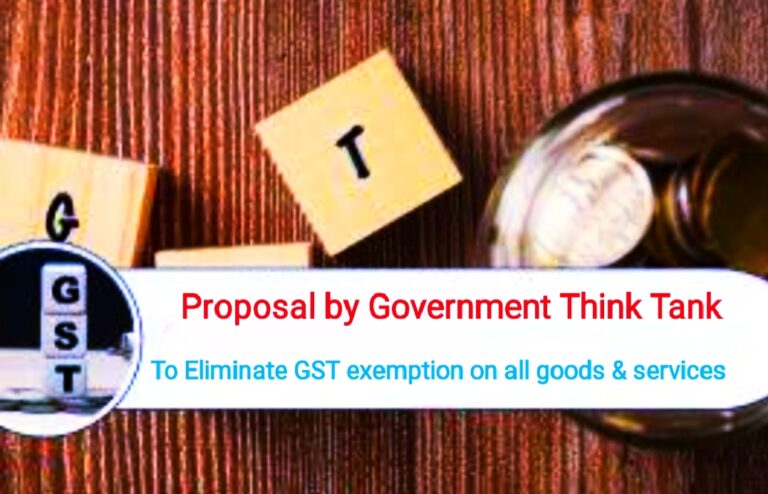NIPFP Proposes for Withdrawal of All GST Exemptions
NIPFP Proposal for Eliminating GST Exemption: In a significant development, the National Institute of Public Finance and Policy (NIPFP), an independent research institute operating under the finance ministry, has put forth a ground-breaking proposal to eliminate all Goods and Services Tax (GST) exemption on goods and services.
This move comes as a response to a recent study conducted by NIPFP, challenging the prevalent notion that the existing GST system is advantageous for the lower-income strata. The study reveals a notable imbalance, indicating that the current framework tends to favor the wealthier segment of the population. This revelation has sparked discussions on the need for a comprehensive review and potential restructuring of the current tax regime to ensure fairness and equity.
The proposal by NIPFP is aimed at addressing the perceived disparities in the distribution of tax benefits and fostering a more balanced system. By withdrawing GST exemptions, the government aims to create a level playing field and promote financial fairness among various income groups. This bold step signifies a reevaluation of the prevailing tax structure to align it more closely with principles of economic equity.
As the discussions surrounding this proposal unfold, it underscores the importance of rethinking taxation policies to better serve the interests of all socioeconomic classes. The government’s consideration to restructure GST reflects a commitment to creating a more transparent and equitable tax framework that aligns with the evolving economic landscape.
CBIC chairman Sanjay Agarwal emphasized the need for a simpler GST structure, pointing out that seeking exemptions on specific items disrupts the Input Tax Credit (ITC) chain. The current GST system provides exemptions for essential goods and services such as foodgrains, fruits, vegetables, meat, hospitals, diagnostic tests, education, and public transport.
The working paper titled “Distributional Impact of Indian GST” reveals that the benefits of GST exemptions primarily accrue to households with higher monthly expenditures, challenging the perception that these exemptions benefit lower-income consumers. Interestingly, the exempted items constitute only around 20% of a low-income household’s monthly expenditure, making the argument for bringing them under the tax net.
Currently, GST comprises nine tax slabs ranging from exempted to out-of-GST. The study, authored by Sacchidananda Mukherjee, considered 123 major groups of household consumption items during 2021-22 to assess the distributional impact of taxes and exemptions.
According to the analysis, the lowest income households spend approximately 20% of their budget on GST-exempt items like foodgrains, vegetables, fruits, and public transport. In contrast, this low-income group allocates around 35% of their budget to items taxed at 5% GST.
The proposed shift in the GST structure aims to create a more equitable distribution of tax benefits, challenging the current narrative that exemptions primarily favor lower-income consumers. As discussions unfold, the government will carefully weigh the potential impact on various income groups and the overall simplicity of the GST framework.
To Access the GST Advisory 612 Dt.10.11.23 CLICK HERE
Read More
ITAT Chennai Order on Section 11 Applicability When Trust Activities Are Commercial By Nature
